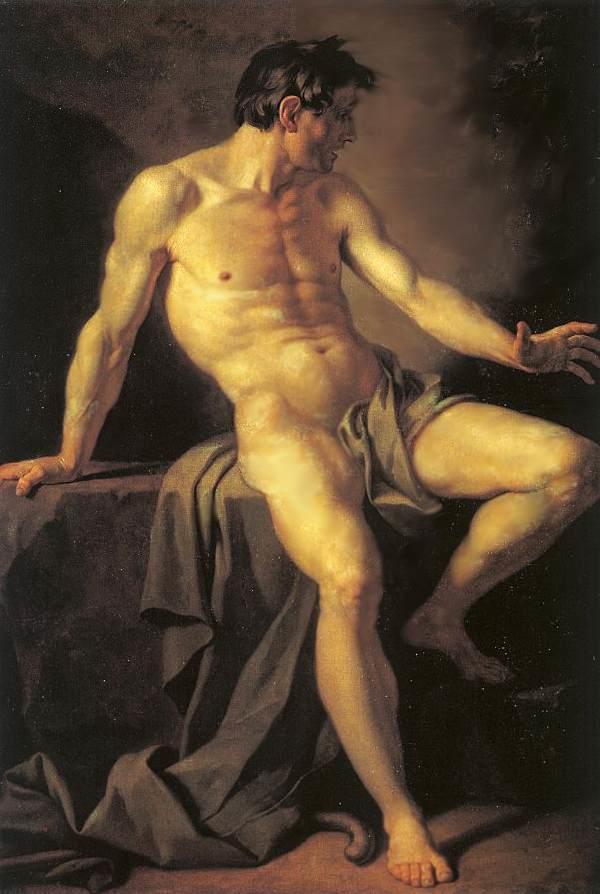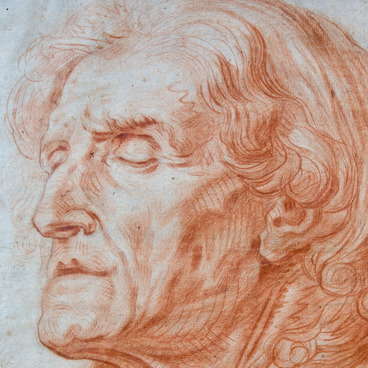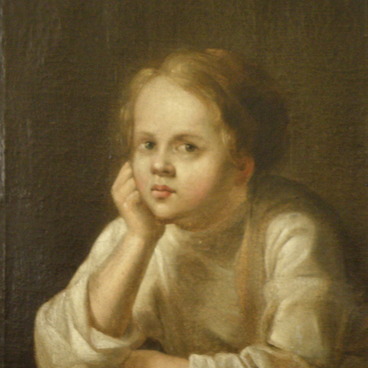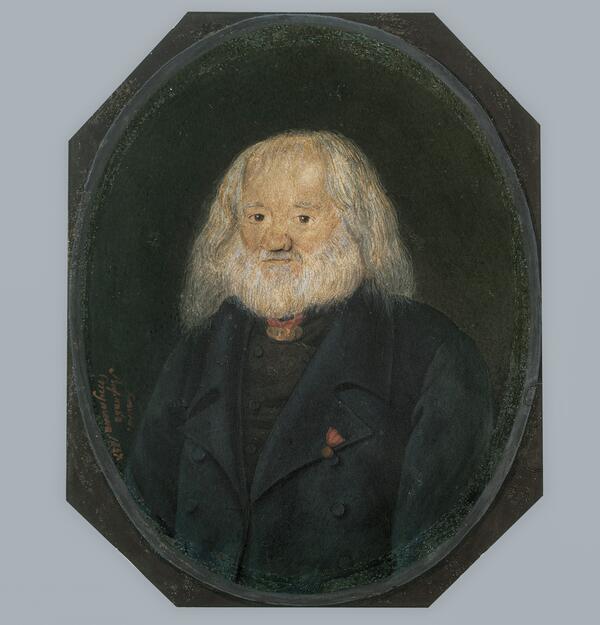The drawing Model was made by Arzamas artist Rafael Stupin. In 1830’s-1850’s he was a well-known master of watercolor portraits. His works are now on view in museums of Arzamas, Kazan and Saratov.
Rafael Stupin was born in the family of the founder of Arzamas Art School Alexander Stupin. Until 1809, he studied painting with his father. In the same year, Rafael Stupin was admitted to the Imperial Art Academy. He studied in the historic painting class with landscape artist Maxim Vorobyev. In 1816 he graduated with a silver medal and two years later returned to Arzamas.
Since 1819, Rafael Stupin taught in his father’s art school. He was instrumental in opening scenography and life classes in the school. He believed that drawing from life is impossible without a deep knowledge of perspective and superficial anatomy. Under his guidance students studied proportions of the human body based on engraved tables and drew the gypsum anatomical figure with exposed muscles — Ecorche — of the French sculptor Jean Antoine Gudon.
Stupin the junior also wrote a theoretical paper The Science of Drawing and Painting with an Accurate Guidance to Correct and Fast Learning. In 1829, he received the Certificate of Grade I with the qualification of history painter.
In 1832 Rafael Stupin left the school and moved from Arzamas to Kazan where he stayed with his friend, architect Mikhail Korinfsky. The exact date and circumstances of the artist’s death remain unknown.
Drawing was taught in Stupin’s school based on the academic methodology. Drawing was considered “the foundation of all arts”. Studies involved copying paintings by famous European and Russian artists.
Rafael Stupin was born in the family of the founder of Arzamas Art School Alexander Stupin. Until 1809, he studied painting with his father. In the same year, Rafael Stupin was admitted to the Imperial Art Academy. He studied in the historic painting class with landscape artist Maxim Vorobyev. In 1816 he graduated with a silver medal and two years later returned to Arzamas.
Since 1819, Rafael Stupin taught in his father’s art school. He was instrumental in opening scenography and life classes in the school. He believed that drawing from life is impossible without a deep knowledge of perspective and superficial anatomy. Under his guidance students studied proportions of the human body based on engraved tables and drew the gypsum anatomical figure with exposed muscles — Ecorche — of the French sculptor Jean Antoine Gudon.
Stupin the junior also wrote a theoretical paper The Science of Drawing and Painting with an Accurate Guidance to Correct and Fast Learning. In 1829, he received the Certificate of Grade I with the qualification of history painter.
In 1832 Rafael Stupin left the school and moved from Arzamas to Kazan where he stayed with his friend, architect Mikhail Korinfsky. The exact date and circumstances of the artist’s death remain unknown.
Drawing was taught in Stupin’s school based on the academic methodology. Drawing was considered “the foundation of all arts”. Studies involved copying paintings by famous European and Russian artists.





